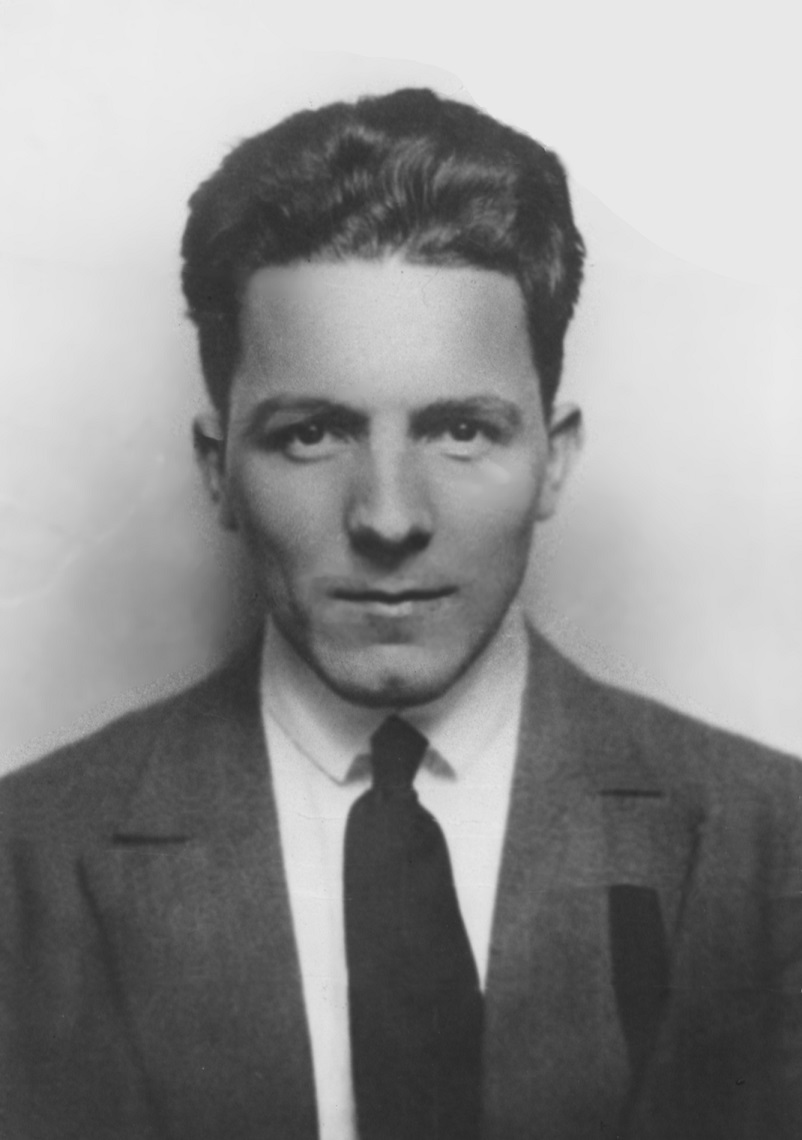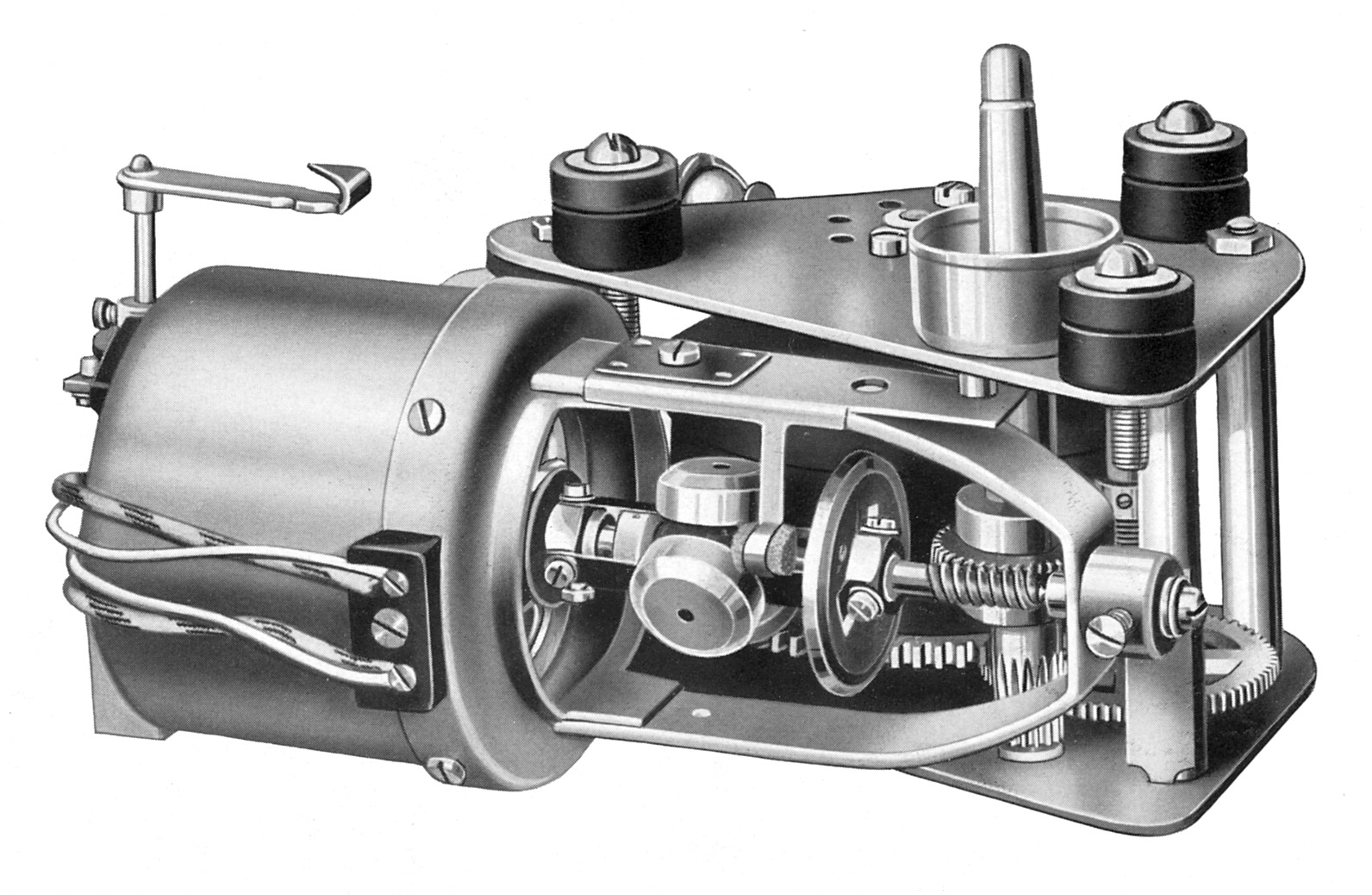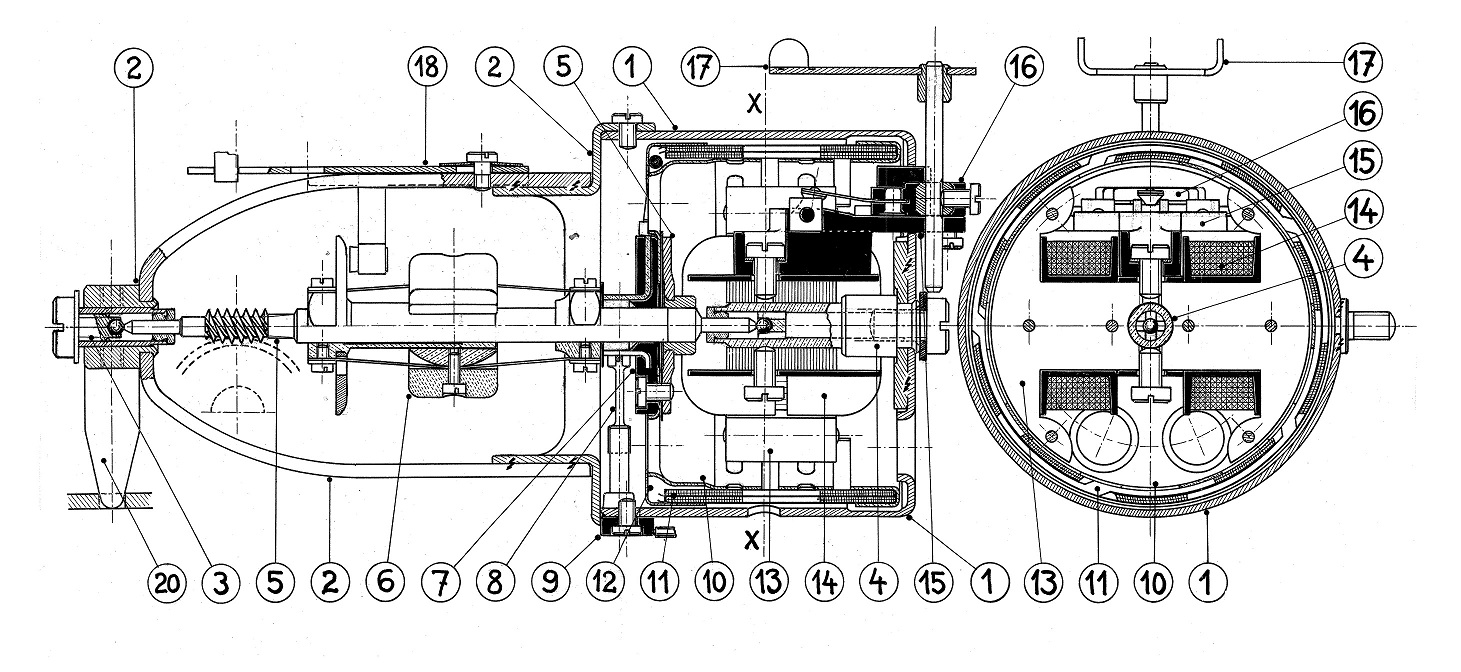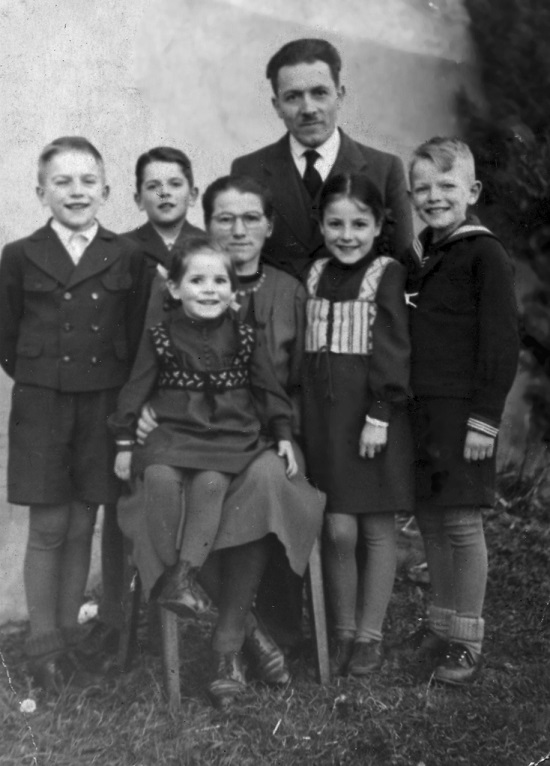Family Formation in St. Georgen, Black Forest
–
Combined Electronic spring work
The brothers Steidinger, who have started a factory specialized in “The special factory for drives for search machines and equipment”, are also clients of the patent-broker Feldman. Mr. Feldman is employing the idea of the French inventor Achille Boitel, to provide a gramophone with an electric motor as well as with a mechanic drive. He develops this type of gramophone until it is ready to go into production and founds the company “Dual-Motoren GmbH” to manufacture and sell it.
Hermann Papst designed this Electric Spring drive, which will become popular all over the world by the name Dual, for Mr. Feldman and optimized it step by step. Since the company “Steidinger- Brothers” produces the hybrid electric gramophone- drive for Mr. Feldman’s company, Hermann Papst is involved in the business-relation of the two companies.
Their aim is to adjust the design of the so-called “Boitel-Motor” for the Dual-Gramophone to ensure the flawless function of the device.
To lead the development task of the drive, Edward D. Feldman sends his chief-designer Hermann Papst to Sankt Georgen. On the March, 22 1928, Hermann Papst starts working for the company of the Steidinger Brothers with the task to continuously improve and supervise the manufacturing of the drive.
In 1928 Hermann Papst starts working as a designer in St. Georgen,
Black Forest. First for the company of the Steidinger brothers which
trades under the name “Dual” later on.
–
–
Dual Gramophones in carrying cases
In 1931 the production of portable dual-gramophones begins. Those gramophones are perfect for the consumer society of that time. Spending the warm summer-weekends outside to have a picnic or enjoy the company of friends and family is in fashion. And what can make a day spent in the countryside more lovely, than a portable gramophone which can be taken along wherever one goes? This product grants the “Gebrüder Steidinger Factory” its fame and succes.
A pay silp for Hermann Papst of the firm “Gebrüder Steidinger” for December 31, 1933 shows that he worked as a freelancer until July 01, 1933. From then on he is an employee of the Brothers-Steidinger-Company, which from 1935 on, trades under the name of “Dual”. In the 1920s the company experiences an unusual expansion. By the year of 1927 “Dual” is already manufacturing 1500 gramophone-drives per day. That year Hermann Papst’s designed Dual-Drive goes into production as well.
Mr. Papst is an engineer who could support us
In 1925 1544 inhabitants of the young industrial town “St. Georgen” are factory workers. Because of that the depression of the world-wide economic and agricultural crises from 1929 to 1933, strikes the town worse than other cities. The firm of the “Gebrüder Steidinger” is spared though actually booming. The senior executive Christian Steidinger urges Hermann Papst to move to St. Georgen and join his company as quickly as possible. He is aware of the competence of the young Designer and values it. Christian Steidinger is convinced: “Mr. Papst is an engineer who could support us.”
–
Mathilde Steidinger
The reason for Hermann Papst to come to Sankt Georgen in the first place, is doubtlessly the very attractive job offer Mr. Feldman arranges for him. But he stays in this small Black-Forest-Town because he finds the woman, with whom he wants to spend and build his life and have a family.
The widow Barbara Steidinger lives in financially modest circumstances with her four daughters Anna, Caroline, Mathilde and Babette. But nevertheless she raises them to be hard working and warm hearted women, who know how to take care of a household.
Mathilde born in 1898 as the third of the Steidinger daughters, takes on a common position in Frankfurt to work for a family. Here she is taught what a wife and mother needs to know: How to cook, lead a household, raise children and treat an ill family-member properly. Back home she starts working for Mr. Langdorff in the “St. Georgs-Pharmacy”. Together with her sisters she takes part in the protestant church life as a committed Christian and supports her mother in taking care of the house.
Mathilde Steidinger and Hermann Papst in 1930
–
“I am full of confidence with Mathilde”
Hermann Papst is fond of Mathilde Steidinger and on a summer’s day in 1928 he approaches her when he sees her in the garden of the local hotel “Hirsch” and talks to her for the first time. In the following months the respected engineer from Vienna tries to win the affection and love of virtous Mathilde.
From time to time he lets the Café Kammerer, which is close by the pharmacy where Mathilde works, deliver her a pot of coffee and some cake and occasionally he sends her flowers. Anyhow he gains access and a place in the family of the widow Barbara Steidinger.
In the late year of 1929 he writes to his mother-in-law to be:
Dear Mother Steidinger!
Please let me call you like this, for I would love to become your son. Alone, as I am right now, I feel strange. And I can feel it strongly, that a life without Mathilde would be indescribably miserable for me.Therefore I am asking you to be so kind as to let me marry Mathilde. In return I will promise to do the best I can as your son and in leading a decent life with Mathilde. I will not forget what my responsibilities are, once you have trusted me with taking care of your daughter. I have to honour true love more than anything and cannot deprive myself of it. I am full of confidence concerning Mathilde and I thank you with all of my heart that you have her.Expecting your kind agreement I greet you cordially,Yours faithfully,Hermann Papst.
–
Mathildes Mother agrees happily to the engagement. But there are still three long years to come until the wedding takes place on July 25, 1931. To establish a home, a lot of work has to be done and savings have to be made. Finally the young couple finds a very spacious apartment for rent after their marriage, located in the centre of town, Gerwigstraße 37.
Family life
Running the household and taking care of their five children, Hans Dieter (1932), Günter Helmut (1933), Georg Friedrich (1935), Hannelore Else (1937) and Ulrike Mathilde (1941), fully occupy Mathilde Papst. Mathilde’s and Hermann’s daughters and sons describe their childhood as happy, sheltered and harmonic, despite economically confined situation and post war years the hardship of the war.
Hermann Papst is most often quite occupied with his work and does not have much time for sociable distractions or spare-time-excursions. He values that his wife supports him so actively and balances his seclusion through her ambitious way. Nevertheless his children remember their father as loving and appreciate the rare, but therefore even more memorable moments, in which his Viennese charm and wit show.
The family-father’s wish to obtain a driver’s license is refused by his wife, after he almost causes a crash once, when trying to overtake another vehicle and drives the car into a stone wall close to the Railway station another time. Later on his children have to drive him quite often.
Hermann and Mathilde Papst with their children
(from left Hans Dieter, Günter, Ulrike, Hannelore und Georg)





